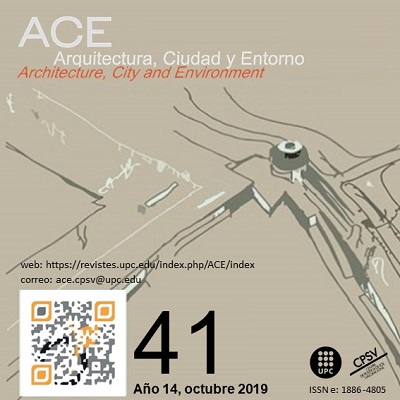Acoustic impact of urban morphology in pedestrian streets
DOI:
https://doi.org/10.5821/ace.14.41.8209Keywords:
Urban morphology, urban acoustics, urban canyon acoustics, pedestrian streetsAbstract
Objective
Current municipal policy on the use of public space proposes the reduction of road traffic on the streets, especially on narrow streets. This strategy encourages other uses of public space, which may compromise the objective of pacification. The present study analyses the acoustic behaviour of streets with this type of urban morphology, in order to establish general criteria when making decisions.
Methodology
Sound intensity level at different heights of a building’s façade have been taken, in a narrow street, in two different acoustic situations: streets occupied by pedestrians and streets without people.
Conclusions
The acoustic levels measured at different heights of the facade of a building are very similar. In certain urban morphologies, such as streets with a narrow urban canyon, the sound level that reaches the windows located at different heights of a building are very similar.
Originality
The studies of urban acoustics focus mainly on the sound produced by traffic. In this study, the users of terraces and other leisure facilities have been considered as the main sound sources.
Downloads
Published
Issue
Section
License
| INTELECTUAL PROTECTION CRITERIA |
At this moment, it is count with the "Oficina Española de Patentes y Marcas", while global protection it is being processed by the World Intelectual Property Organization (OMPI/WIPO). Nevertheless the International Standard Serial Number Office (ISSN) has given the following numbers ISSN: 1886-4805 (electronic version) and 1887-7052 (paper version). All articles will be peer reviewed, using double blind reviewing. |
| COPYRIGHT |
The article contents and their comments are authors exclusive liability, and do not reflect necessarily the journal editor commitee's opinion. All ACE published works are subject to the following licence CC BY-NC-ND 3.0 ES http://creativecommons.org/licenses/by-nc-nd/3.0/es/ It implies that authors do not hold nor retain the copyright without restrictions but only those included in the licence. |


































